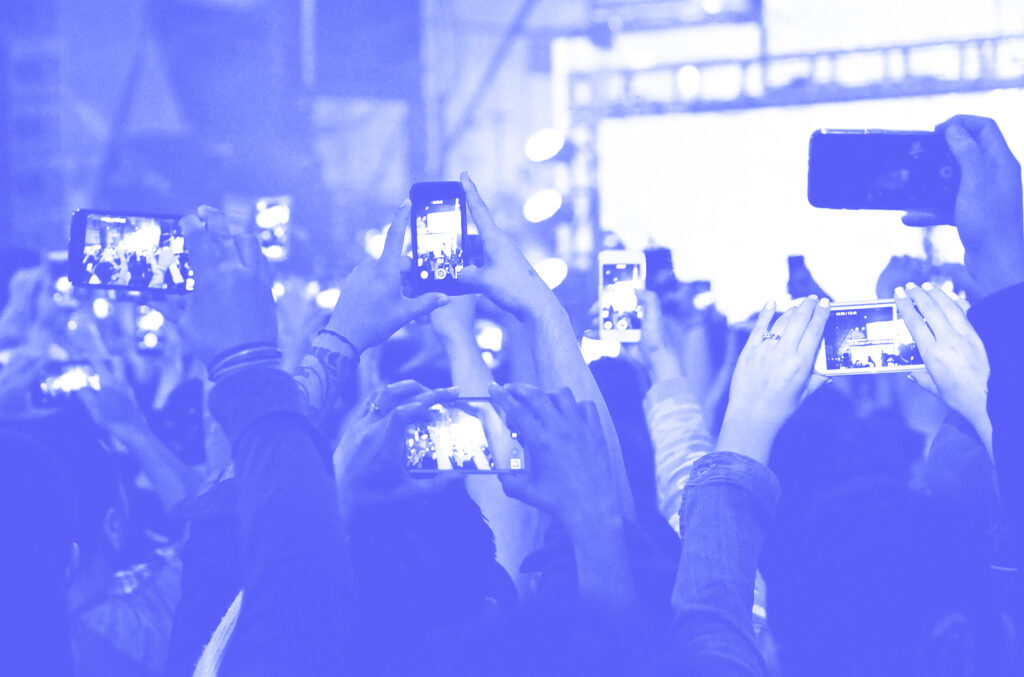
In this article, we take a deep dive into the different ways music rightsholders can claim royalties on Youtube and the role Song Sleuth has in the process.
Social media platforms have opened a new world for content creation, and millions of creators made them their playground for artistic expression. Platforms such as YouTube, Instagram and TikTok allow users to record their own video and audio, or alternatively access their respective audio catalogues which include millions of master recordings of songs.
What is UGC?
UGC stands for user-generated content. We can define it as published information that an unpaid user uploads to a platform in the form of photos, videos, posts, comments and audio.
Let’s take YouTube as an example. A UGC video could be a clip that is uploaded by any user who simply wanted to share a moment, like the one below. In this case, Leotis S, the user that published an amateur video of a Beyoncé concert in St. Louis, is not a professional Youtuber with an official account.

Other examples of UGC could include but are not limited to, cover videos by artists, as well as remixes, edits and mashups. In all these cases, users are recording a video with audio that corresponds to a licensed piece of music, but when uploaded to these platforms, it does not always match with a master recording on file.
Legal implications of UGC
While UGC is a great tool to create content, engagement and loyalty to YouTube, it can be a bit messy in legal terms.
What constitutes copyright infringement? How can you appropriately use a piece of licensed music? What are the implications for independent creators? These are some of the questions you might have when thinking about this topic.
Creators have two options: to register licensed music they use on their video, or not.
If they do, then it means they are transparently stating who is the legal owner of the piece of music and allowing the platform to correctly compensate the owners for using their work. The image below shows an example of a well-used piece of licensed music on Youtube.

Nevertheless, this does not always happen. There are thousands of videos that use licensed music which are not correctly stated in their descriptions. Mostly because creators want to avoid music copyright claims, even though they rarely manage to avoid them.
According to Lickd, there are various techniques creators use to avoid this responsibility. From writing “I claim no rights to this song” to changing the speed or pitch of the music they use. However, claiming tech systems are now highly effective, making it difficult for any of these techniques to work in the long run.
At this point, you might be wondering what these claiming systems are, so follow along.
Content ID and Manual Claiming
YouTube’s Content ID system matches the Content ID, a code automatically generated when any video is uploaded, between different videos on the platform. Each new video is scanned against a database of audio and video that rights owners have already uploaded on Youtube. If the system finds a match, it immediately applies a claim resulting in one of the following scenarios:
- The video is blocked from having additional views;
- The video starts to get monetised through running ads;
- The video statistics start to get tracked.
These different scenarios are “geographic-specific”, meaning that while in a region the video might be monetised, in others the video can be either blocked or simply tracked.
To all the rights holders out there: to claim royalties through Content ID, you have to comply with specific requirements established by Youtube. To check if you’re eligible, check YouTube’s criteria and fill out this form to let the platform know what your copyright management needs are.
To all the creators: if you want to see if your video has a Content ID claim, just go to your YouTube Studio page, and on Content, you’ll find the Copyright claim dashboard. Now that you’re pretty much acquainted with what the Content ID system is, let’s understand manual claiming. This type of claiming procedure is only possible if the rights owners, through the Manual Claiming tool available in the YouTube Studio Content Manager, search for music that is licensed but unclaimed.
It should be noted that manual claiming is not available to everyone, only to partners that need such a specific tool and have “advanced working knowledge of copyright and Content ID”, as stated by Youtube.
While the Content ID system is automatically generated, manual claiming implies that rights owners have to specifically mention the accurate timestamps their music is being used, for the video creators to know which part of it is being claimed. If rights owners frequently fail to specify the correct timestamps, then their access to the Manual Claiming tool can be revoked. The crucial difference between Content ID and manual claiming is the fact that so much content, mostly user-generated content, slips through the cracks, and never ends up being claimed through the Content ID system. This represents a huge opportunity since it means that licensed content is being used and shared without ever being claimed in the platform. Check our article “The undervalued gem on YouTube – manual claiming” to have a better grasp of the size of this opportunity.
Song Sleuth
Our philosophy at Song Sleuth is to “Find the Unfindable”, particularly when it comes to user-generated content containing music, which we often find in the form of live recordings, covers and remixes of master recordings from the public to name a few examples.
Through our first-of-its-kind proprietary algorithm, we have the ability to discover content on YouTube enabling their rightful owners to claim royalties other systems are not able to detect.


